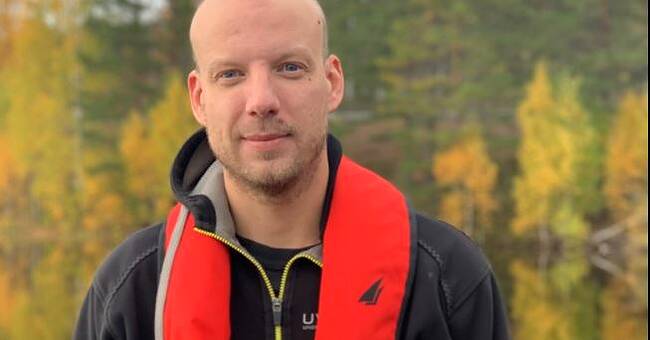Barely a year ago, he was on board a German-flagged ship and studied the screens that came from a naval robot at the wreck of Estonia.
- I drove there along the hull side and suddenly it looked like the boat ran out.
We stopped and realized that we could hardly have gotten to the stern yet.
So then we continued and discovered the damage, says Linus Andersson.
Big surprise
Everyone in the film team was extremely surprised.
Linus Andersson had carefully gone through the video material that existed from the previous investigations, and had not seen such a tear.
- But the previous surveys were deficient, so that does not say much.
For example, they had moved from the propellers to the bridge, on to the bow and back to the propellers.
Not at all methodical.
We drive according to a certain pattern.
You lay out an imaginary grid over the wreck and then examine square by square?
- Just like that, with high resolution.
So ... the hole may have been in the previous films but not seen because the investigation was so deficient, says Linus Andersson.
According to him, the hole was caused by a strong external force, either in the water surface or when the ship hit the bottom.
- There is actually a piece of sheet metal that is blown outwards, while everything else is pressed inwards.
It may indicate that something has hit and then gone out again.
As an old naval officer, I know that there are containers and other things that have gone overboard and float around and can cause damage.
But I do not want to speculate, he says.
More surveys
He wants the documentary to be the basis for more investigations.
But it will be difficult with the law that he himself has been prosecuted for having violated.
- I know.
So you probably need to change the law.
I mean, the legislation that applies in international waters is the United Nations Convention on Life at Sea, and then it's the flag state's regulations that apply.
We were out with a German-flagged ship, he says and adds that it would quickly become a problem if national legislation were allowed to tumble on the international regulations.
Titanic protected
The Titanic is a similar case, but almost all maritime-related countries have signed on to protect the wreck.
Here it is only Sweden, Finland and Estonia.
- I understand that the law to protect the wreck after Estonia exists.
It was also important to me with the ethical and moral aspects.
But when I heard that the relatives' association almost encouraged us, I felt safe, says Linus Andersson.
To go out with a name and picture even though he is accused, he sees no problem with.
- In the documentary, I am completely visible by name, and I have made the decision to be included entirely.
"Peace in Estonia has been violated by the incident"
The law on grave peace makes it forbidden to dive nearby, and if you are convicted of the crime, you risk imprisonment for up to two years or a fine.
- The grave peace at Estonia has been violated by the incident, says Helene Gestrin at the International Prosecutor's Office in Gothenburg.
Here you can read more about how the prosecutor reasons.

